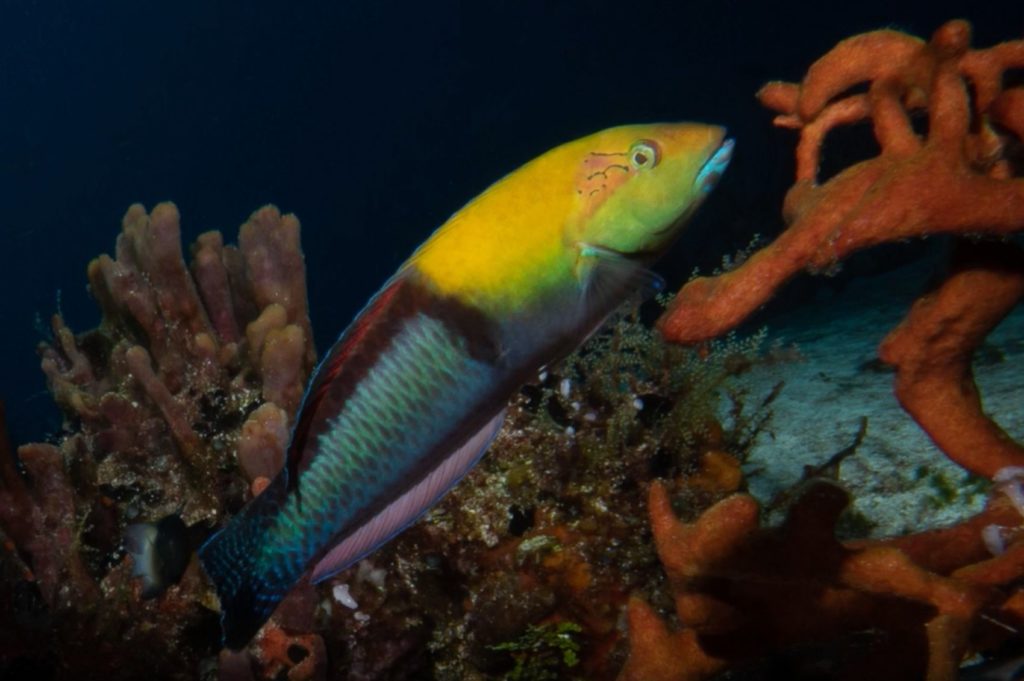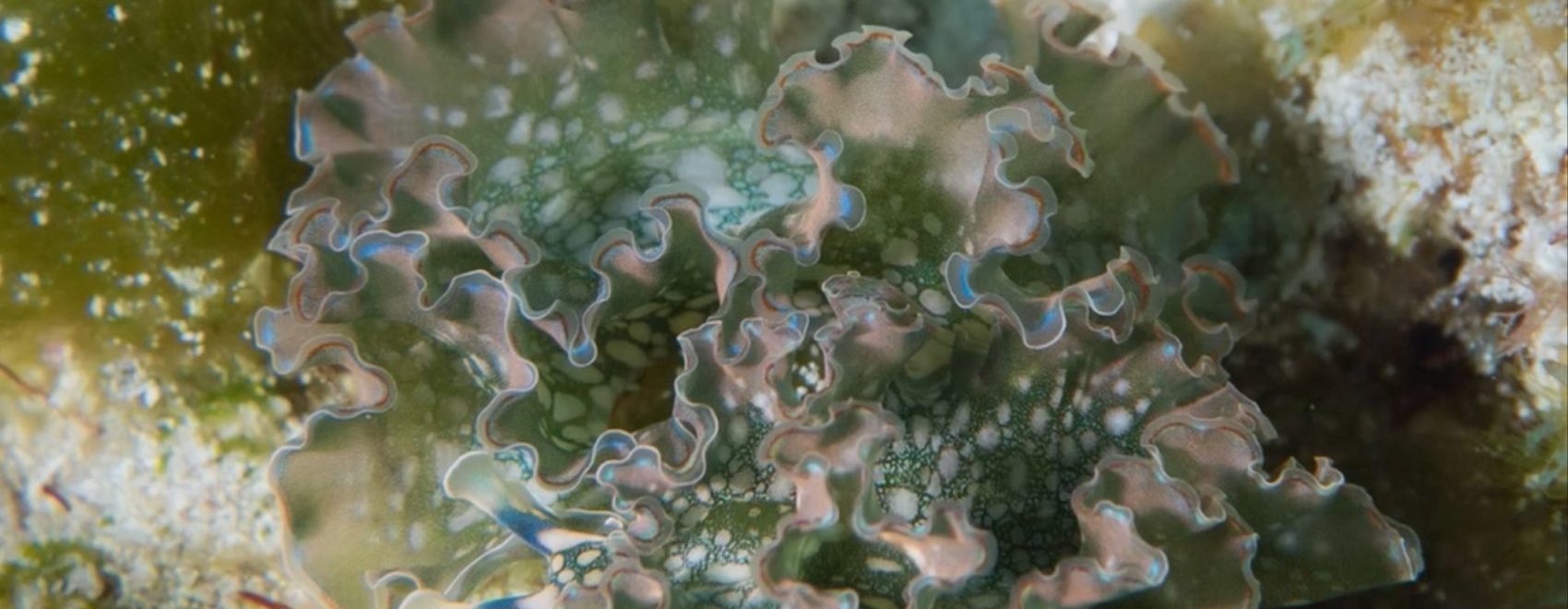It feels good to be back in the Cozumel groove. A big part of that groove is diving with Tres Pelicanos three or four days a week. This marine life slide show includes a mix of large and small, common and rare, beautiful and humorous.

The world has a lot of blenny lovers. Sides #4 & #5 demonstrate why. With slide #5 you may understand why there can be a lot of laughter underwater.
Much larger, but harder to see, are squid during the day (#6). They are out and about, but in the daytime they appear almost transparent.
Now a parental warning! There is slug porn ahead! I had never seen lettuce sea slugs mating before (#9). They chased each other, rotated quickly in a tight circle. Speed is relative, of course, but I never would have guessed that slugs could move that fast. On the same dive, I spied a possible result of such shenanigans — the smallest lettuce slug I have ever seen, perhaps a baby (#10).
Lettuce slugs are interesting. They eat green algae, but not all of the algae is digested. Some of the algae is sent off to make a home in the ruffles. The algae’s chloroplasts convert sunlight into energy, and the slug has photosynthetic energy. How cool is that? Kind of like a hybrid car!
With photography, there are times you wish marinelife would take direction. “Hey, turn this way, please.” Slide #13 is an excellent example. I was pleading with that painted elysia to climb onto the top of the algae. I was ignored. But sometimes they come through. Slide #14 is a first for me — two species in a macro shot. A painted elysia and a lettuce sea slug.
Next is a favorite of mine, and it’s quite rare around Cozumel. Batfish (#15 & #16) are difficult to spot, but Divemaster José knows where two live. Their fins have evolved into feet, and these fish walk rather than swim, which is probably why they are so rare.
José also found a bearded fireworm, draped in a way that shows both its top and bottom sides (#18), followed by a balloonfish, which ranks high on the cuteness scale (#19). Another cute fish, and one of my favorites, is the juvenile yellowtail damsel (#20).
The final five slides are all from one dive. With no cruise ships, we can fin through a marine life nursery. We entered at the end of Paradise Reef and then traveled under the International and Puerta Maya piers.
First is a difficult-to-photograph banded clinging crab in an anemone. They burrow down to hide in the anemone’s arms, plus they are covered with red algae. But, their eyes are really cool with dots.
Next is something I had not seen before, an intermediate queen triggerfish. It’s followed by two “cousins.” The baby French angelfish, with its blue fins, was still in the vibrating or quivering stage. I was told that, when they are vibrating, they are not more than a day old. I don’t know if that is correct, but I can tell you that this baby was no larger than my thumbnail. Then the baby’s cousin, a juvenile gray angelfish, was sharing a nook with a coral banded shrimp — you can see only its feelers.
Last is a juvenile rock beauty, which are notoriously shy and will vanish if a diver approaches. This little cutie looked downright bashful.
MJ

